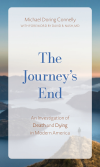Zusammenfassung
In the tradition of Atul Gawande’s Being Mortal, this compassionate work helps individuals develop a more accepting view of dying while teaching them what to expect and how to navigate the healthcare system at the end of life.
In elderhood, the health care system has a narrow view of how to provide care. It focuses on extending a patient's life at all costs, with an over-reliance on machines and procedures, instead of caring holistically for the person. Accordingly, many of us will likely spend our final weeks in long-term care facilities or an ICU.
Dying at home, peacefully, and surrounded by family is almost impossible in our world--and our fear of death is a major contributor to this impossibility. Fittingly, the central idea of this book is that in old age, or when facing a terminal diagnosis, it is more important to understand your life rather than to extend it. While this may seem simple, its implications are profound.
A natural death means accepting that, at some point, we are old enough or sick enough to die. In our cynical and overly clinical age, it is difficult to reflect on the meaning of one's life, but that kind of honest introspection is exactly what we need. Accordingly, The Journey’s End seeks to help people manage their healthcare, their expectations, and their decisions in the final phase of life.
Schlagworte
Aging palliative care elderly nursing home healthcare system seniors patients healthcare reform caregiver caregiving caretaker eldercare advanced directives EOL EOL care long term care patient stories medical training practices terminal illness assisted living health advocacy home health hospice care hospital systems management death and life death literacyKeywords
hospital physicians illness death hospice healthcare- i–xvi Preface i–xvi
- 93–100 9. DISAPPEARING 93–100
- 215–228 NOTES 215–228
- 229–236 BIBLIOGRAPHY 229–236
- 237–250 INDEX 237–250
- 251–251 ABOUT THE AUTHOR 251–251

